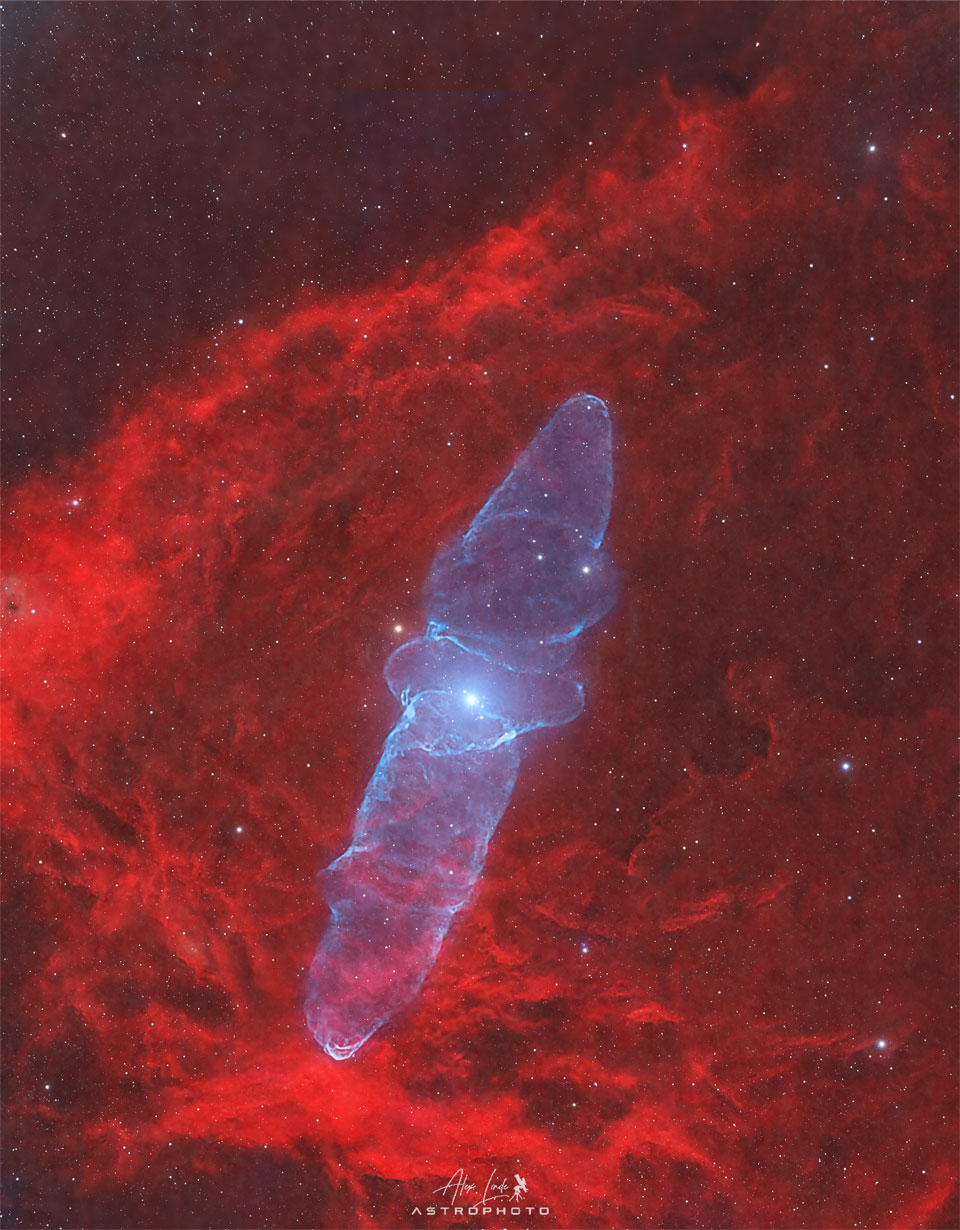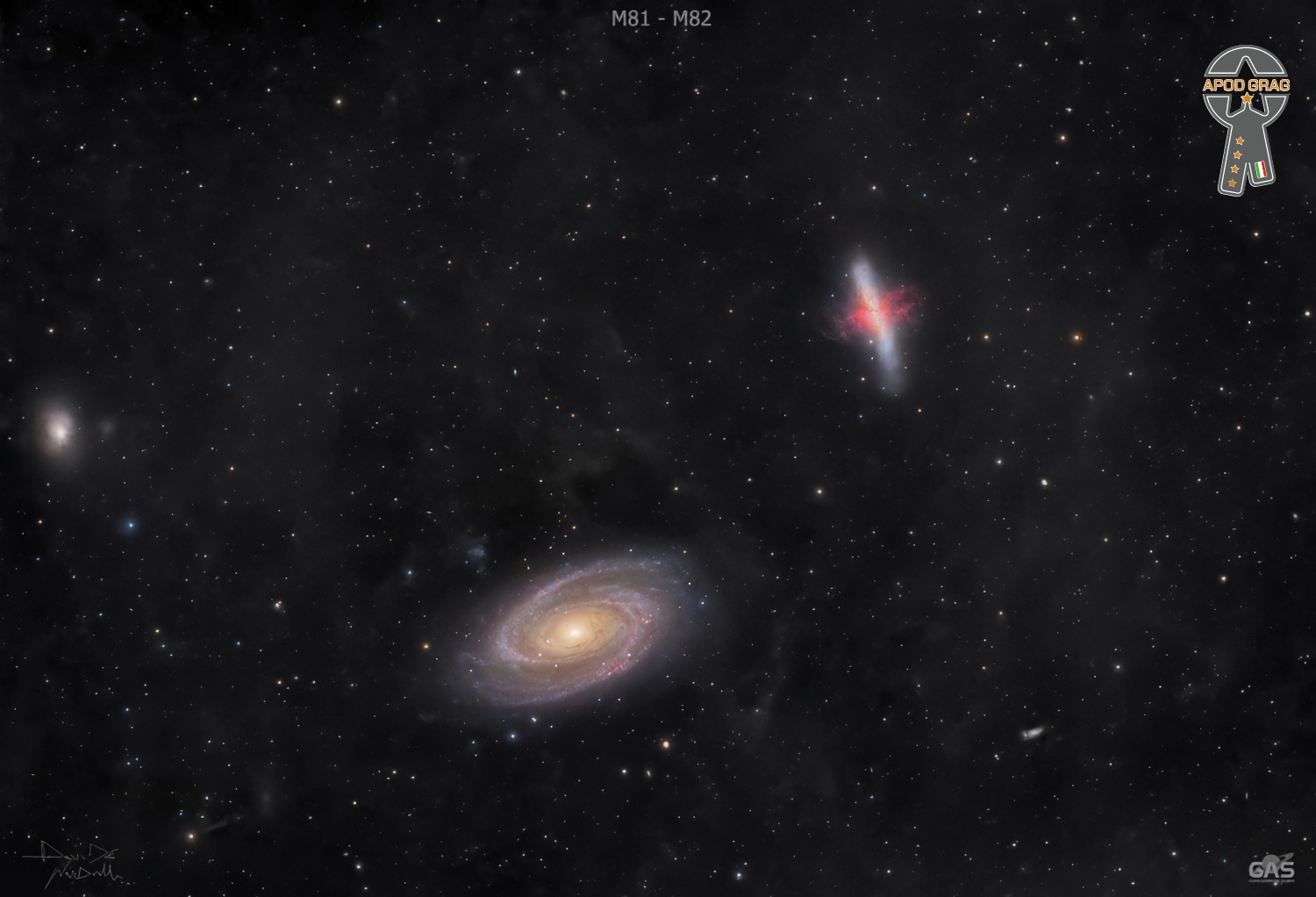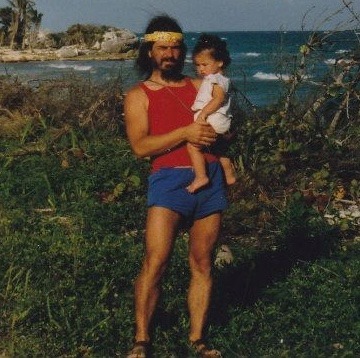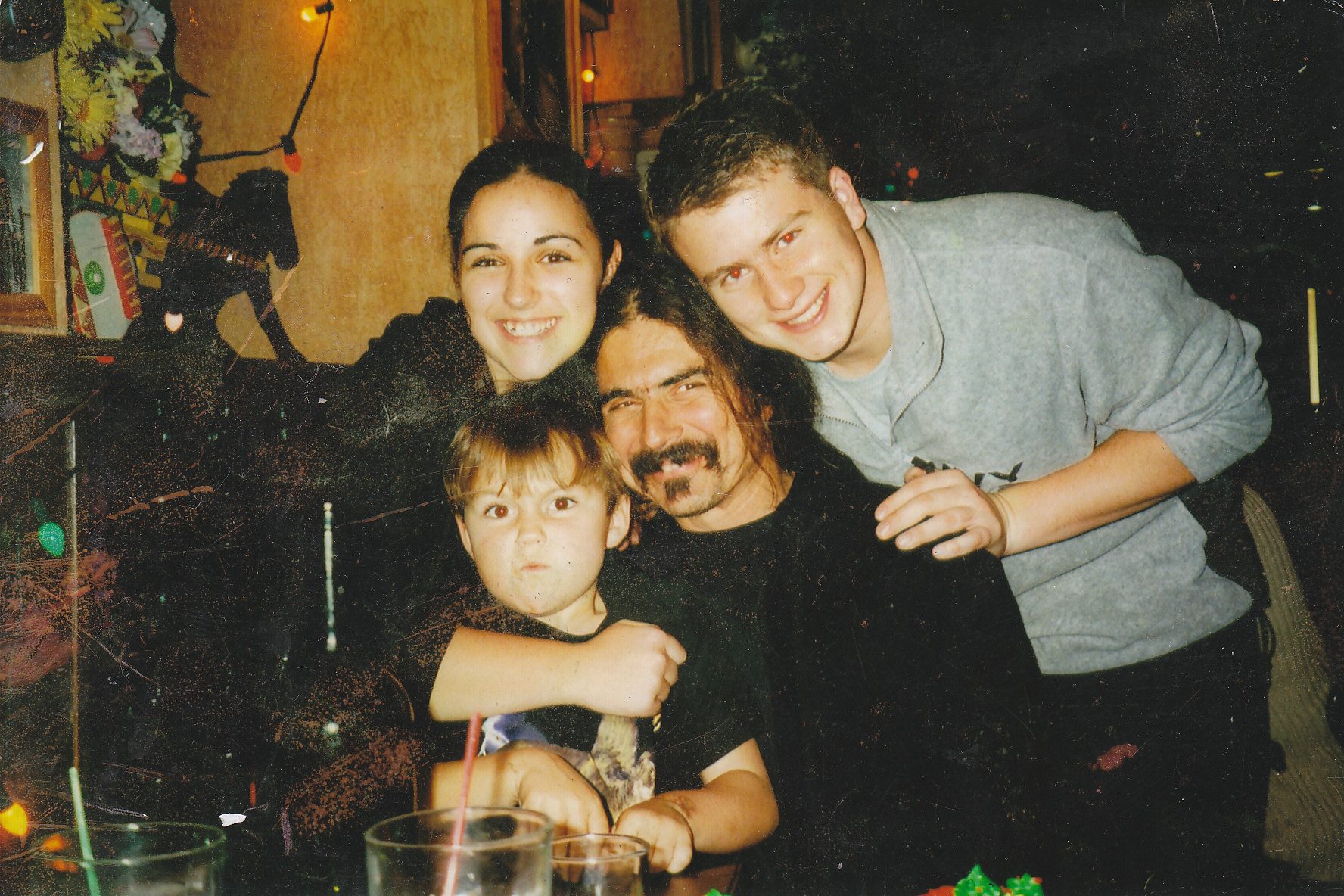Blog
Squids on Earth aren’t this big. This mysterious squid-like cosmic cloud spans nearly three full moons on planet Earth’s sky. Discovered in 2011 by French astro-imager Nicolas Outters, the Squid Nebula’s bipolar shape is distinguished here by the telltale blue emission from doubly ionized oxygen atoms. Though apparently surrounded by the reddish hydrogen emission region Sh2-129, the true distance and nature of the Squid Nebula have been difficult to determine. Still, one investigation suggests Ou4 really does lie within Sh2-129 some 2,300 light-years away. Consistent with that scenario, the cosmic squid would represent a spectacular outflow of material driven by a triple system of hot, massive stars, cataloged as HR8119, seen near the center of the nebula. If so, this truly giant squid nebula would physically be over 50 light-years across.

Sir James Paul McCartney CH MBE (born 18 June 1942) is an English singer, songwriter and musician who gained worldwide fame with the Beatles, for whom he played bass guitar and shared primary songwriting and lead vocal duties with John Lennon. One of the most successful composers and performers of all time, McCartney is known for his melodic approach to bass-playing, versatile and wide tenor vocal range, and musical eclecticism, exploring genres ranging from pre–rock and roll pop to classical, ballads, and electronica. His songwriting partnership with Lennon is the most successful in modern music history.
Born in Liverpool, McCartney taught himself piano, guitar, and songwriting as a teenager, having been influenced by his father, a jazz player, and rock and roll performers such as Little Richard and Buddy Holly. He began his career when he joined Lennon’s skiffle group, the Quarrymen, in 1957, which evolved into the Beatles in 1960. Sometimes called “the cute Beatle”, McCartney later immersed himself in the London avant-garde scene and played a key role in incorporating experimental aesthetics into the Beatles’ studio productions. Starting with the 1967 album Sgt. Pepper’s Lonely Hearts Club Band, he gradually became the band’s de facto leader, providing creative impetus for most of their music and film projects. Many of his Beatles songs, including “And I Love Her“, “Yesterday“, “Eleanor Rigby“, and “Blackbird“, rank among the most covered songs in history. Although primarily a bassist with the Beatles, he played a number of other instruments, including keyboards, guitars, and drums, on various songs.
After the Beatles disbanded, he debuted as a solo artist with the 1970 album McCartneyand went on to form the band Wings with his first wife, Linda, and Denny Laine. Under McCartney’s leadership, Wings became one of the most successful bands of the 1970s. He wrote or co-wrote their US or UK number-one hits, such as “My Love“, “Band on the Run“, “Listen to What the Man Said“, “Silly Love Songs“, and “Mull of Kintyre“. He resumed his solo career in 1980 and has been touring as a solo artist since 1989. Apart from Wings, his UK or US number-one hits include “Uncle Albert/Admiral Halsey” (with Linda), “Coming Up“, “Pipes of Peace“, “Ebony and Ivory” (with Stevie Wonder), and “Say Say Say” (with Michael Jackson). Beyond music, he has been involved in projects to promote international charities related to animal rights, seal hunting, land mines, vegetarianism, poverty, and music education.
McCartney has written or co-written a record 32 songs that have topped the BillboardHot 100 and, as of 2009, he had sales of 25.5 million RIAA-certified units in the US. His honours include two inductions into the Rock and Roll Hall of Fame (as a member of the Beatles in 1988 and as a solo artist in 1999), an Academy Award, a Primetime Emmy Award, 18 Grammy Awards, an appointment as a Member of the Order of the British Empire in 1965, and a knighthood in 1997 for services to music. As of 2024, he is one of the wealthiest musicians in the world, with an estimated fortune of £1 billion.
more...Don Francis Bowman “Sugarcane” Harris (June 18, 1938 – November 30, 1999) was an American blues and rock and roll violinist and guitarist. He is considered a pioneer in the amplification of the violin.
Career
Harris was born and raised in Pasadena, California, United States. His parents were carnival entertainers. As a youth, he studied classical violin, and learned additional instruments including harmonica, piano and guitar.
Harris began performing with a doo-wop group, The Squires, which included his childhood friend, the pianist Dewey Terry. The Squires recorded for Vita Records.Harris performed in Little Richard’s band in the 1960s.
more...Ray McKinley (June 18, 1910 – May 7, 1995) was an American jazz drummer, singer, and bandleader. He played drums and later led the Major Glenn Miller Army Air Forces Orchestra in Europe. He also led the new Glenn Miller Orchestra in 1956.
Born in Fort Worth, Texas, United States, McKinley’s parents bought him his first drum set at the age of nine. Soon after he began playing with a local band called The Jolly Jazz Band in the Dallas–Fort Worth area. He left home when he was 15 and played with Milt Shaw’s Detroiters and the Smith Ballew and Duncan-Marin bands. His first substantial professional engagement came in 1934 with the Dorsey Brothers’ Orchestra. It was with the Smith Ballew band in 1929 that McKinley met Glenn Miller. The two formed a friendship that lasted from 1929 until Miller’s death in 1944. McKinley and Miller joined the Dorsey Brothers in 1934. Miller left for Ray Noble in December 1934, while McKinley remained.
The Dorsey brothers split in 1935, with McKinley remaining with Jimmy Dorsey until 1939, when he joined Will Bradley, becoming co-leader. McKinley’s biggest hit with Bradley, as a singer, was “Beat Me Daddy, Eight to the Bar“, which he recorded early in the year 1940 (and for which he got partial songwriting credit under his wife’s maiden name Eleanore Sheehy). McKinley is referred to as “Eight Beat Mack” in the lyrics to the song “Down the Road a Piece,” which he recorded as a trio with Will Bradley and Freddie Slack in 1940. This was the earliest recording of the song, which was written specifically for Bradley’s band by Don Raye.
more...Ray Bauduc (June 18, 1906 – January 8, 1988) was an American jazz drummer best known for his work with the Bob Crosby Orchestra and their band-within-a-band, the Bobcats, between 1935 and 1942. He is also known for his shared composition of “Big Noise from Winnetka,” a jazz standard.
Bauduc was born in New Orleans, Louisiana, United States. He was the son of cornetist Jules Bauduc. His older brother, Jules Jr., was a banjoist and bandleader. His sister was also a musician, a pianist. Bauduc’s youthful work in New Orleans included performing in the band of Johnny Bayersdorffer, and on radio broadcasts. His New Orleans origin instilled in him a love for two-beat drumming, which he retained when he played with Bob Crosby’s swing-era big band. In 1926, he moved to New York City to join Joe Venuti‘s band. His other work in the 1920s included recording with the Original Memphis Five and the Scranton Sirens, which included Tommy Dorsey and Jimmy Dorsey.
more...A visually striking collection of interstellar gas and dust is the focus of this week’s Hubble Picture of the Week. Named RCW 7, the nebula is located just over 5300 light-years from Earth in the constellation Puppis. Nebulae are areas of space that are rich in the raw material needed to form new stars. Under the influence of gravity, parts of these molecular clouds collapse until they coalesce into protostars, surrounded by spinning discs of leftover gas and dust. In the case of RCW 7, the protostars forming here are particularly massive, giving off strongly ionising radiation and fierce stellar winds that have transformed it into what is known as a H II region. H II regions are filled with hydrogen ions — where H I refers to a normal hydrogen atom, H II is hydrogen that has lost its electron. The ultraviolet radiation from the massive protostars excites the hydrogen, causing it to emit light and giving this nebula its soft pinkish glow. Here Hubble is studying a particular massive protostellar binary named IRAS 07299-1651, still in its glowing cocoon of gas in the curling clouds towards the top of the nebula. To expose this star and its siblings, this image was captured using the Wide Field Camera 3 in near-infrared light. The massive protostars here are brightest in ultraviolet light, but they emit plenty of infrared light which can pass through much of the gas and dust around them and be seen by Hubble. Many of the other, larger-looking stars in this image are not part of the nebula, but sit between it and our Solar System. The creation of an H II region marks the beginning of the end for a molecular cloud. Over only a few million years, the radiation and winds from the massive stars gradually disperse the gas — even more so as the most massive stars come to the end of their lives in supernova explosions. Only a fraction of the gas will be incorporated into new stars in this nebula, with the rest being spread throughout the galaxy to eventually form new molecular clouds.

Brian John Cole (born 17 June 1946) is an English pedal steel guitarist, who has long been active as a session and solo musician. Coming to prominence in the early 1970s with the band Cochise, Cole has played in many styles, ranging from mainstream pop and rock to jazz and eclectic experimental music, but has never forgotten the instrument’s roots in country music. Cole plays lap steel and dobro.
more...Charles Walter Rainey III (born June 17, 1940) is an American bass guitarist who has performed and recorded with many well-known acts, including Aretha Franklin, Steely Dan, and Quincy Jones. Rainey is credited for playing bass on more than 1,000 albums, and is one of the most recorded bass players in the history of recorded music.
Rainey was born in Cleveland, Ohio, on June 17, 1940, and grew up in Youngstown. His parents were both amateur pianists. He learned viola, piano, and trumpet as a childand majored in brass instruments in college. He attended Lane College in Jackson, Tennessee. Rainey began playing bass guitar in the military.
more...Tony Scott (born Anthony Joseph Sciacca June 17, 1921 – March 28, 2007) was an American jazz clarinetist and arranger with an interest in folk music around the world. For most of his career he was held in high esteem in new-age music circles because of his involvement in music linked to Asian cultures and to meditation.
Born in Morristown, New Jersey, United States, Scott attended Juilliard School from 1940 to 1942. In the 1950s he worked with Sarah Vaughan and Billie Holiday. He also had a young Bill Evans and Paul Motian as side-men on several albums released between 1957 and 1959.[1] In the late 1950s, he won on four occasions the DownBeatcritics poll for clarinetist in 1955, 1957, 1958 and 1959. He was known for a more “cool” style on the instrument than his peer Buddy DeFranco who often played a more aggressive bebop style.
more...Igor Fyodorovich Stravinsky (17 June [O.S. 5 June] 1882 – 6 April 1971) was a Russian composer and conductor with French citizenship (from 1934) and American citizenship (from 1945). He is widely considered one of the most important and influential composers of the 20th century and a pivotal figure in modernist music.
Born to a famous bass in Saint Petersburg, Russia, Stravinsky grew up taking piano and music theory lessons. While studying law at the University of Saint Petersburg, he met Nikolai Rimsky-Korsakov and studied under him until his death in 1908. Stravinsky met the impresario Sergei Diaghilev soon after, who commissioned the composer to write three ballets for the Ballets Russes‘s Paris seasons: The Firebird (1910), Petrushka (1911), and The Rite of Spring (1913), the last of which caused a near-riot at the premiere due to its avant-garde nature and later changed the way composers understood rhythmic structure.
Stravinsky’s compositional career is often divided into three periods: his Russian period (1913–1920), his neoclassical period (1920–1951), and his serial period (1954–1968). During his Russian period, Stravinsky was heavily influenced by Russian styles and folklore. Works such as Renard (1916) and Les noces (1923) drew upon Russian folk poetry, while compositions like L’Histoire du soldat (1918) integrated these folk elements with popular musical forms, including the tango, waltz, ragtime, and chorale. His neoclassical period exhibited themes and techniques from the classical period, like the use of the sonata form in his Octet (1923) and use of Greek mythological themes in works like Apollon musagète (1927), Oedipus rex (1927), and Persephone (1935). In his serial period, Stravinsky turned towards compositional techniques from the Second Viennese School like Arnold Schoenberg‘s twelve-tone technique. In Memoriam Dylan Thomas (1954) was the first of his compositions to be fully based on the technique, and Canticum Sacrum (1956) was his first to be based on a tone row. Stravinsky’s last major work was the Requiem Canticles (1966), which was performed at his funeral.
While many supporters were confused by Stravinsky’s constant stylistic changes, later writers recognized his versatile language as important in the development of modernist music. Stravinsky’s revolutionary ideas influenced composers as diverse as Aaron Copland, Philip Glass, Béla Bartók, and Pierre Boulez, who were all challenged to innovate music in areas beyond tonality, especially rhythm and form. In 1998, Time magazine listed Stravinsky as one of the 100 most influential people of the century. Stravinsky died of pulmonary edema on 6 April 1971 in New York City, having left six memoirs written with his friend and assistant Robert Craft, as well as an earlier autobiography and a series of lectures.
more...Messier 81 (also known as NGC 3031 or Bode’s Galaxy) is a grand design spiral galaxy about 12 million light-years away in the constellation Ursa Major. It has a D25isophotal diameter of 29.44 kiloparsecs (96,000 light-years). Because of its relative proximity to the Milky Way galaxy, large size, and active galactic nucleus (which harbors a 70 million M☉ supermassive black hole), Messier 81 has been studied extensively by professional astronomers. The galaxy’s large size and relatively high brightness also makes it a popular target for amateur astronomers. In late February 2022, astronomers reported that M81 may be the source of FRB 20200120E, a repeating fast radio burst.
Messier 82 (also known as NGC 3034, Cigar Galaxy or M82) is a starburst galaxyapproximately 12 million light-years away in the constellation Ursa Major. It is the second-largest member of the M81 Group, with the D25 isophotal diameter of 12.52 kiloparsecs (40,800 light-years).

more...
Stewart Armstrong Copeland (born July 16, 1952) is an American musician and composer. He is best known for his work as the drummer of the English rock band the Police from 1977 to 1986, and again from 2007 to 2008. Before playing with the Police, he played drums with English rock band Curved Air from 1975 to 1976. As a composer, his work includes the films Wall Street (1987), Men at Work (1990), Good Burger(1997), and We Are Your Friends (2015); the television shows The Equalizer (1985–1989), The Amanda Show (1999–2002), and Dead Like Me (2003–2004); and video games such as the Spyro series (1998–present) and Alone in the Dark: The New Nightmare (2001). He has also written various pieces of ballet, opera, and orchestral music.
According to MusicRadar, Copeland’s “distinctive drum sound and uniqueness of style has made him one of the most popular drummers to ever get behind a drumset”. He was ranked the 10th best drummer of all time by Rolling Stone in 2016. He was inducted into the Rock and Roll Hall of Fame as a member of the Police in 2003, the Modern Drummer Hall of Fame in 2005, and the Classic Drummer Hall of Fame in 2013.
more...More Posts
- Daily Roots FITRI ALFIANA
- Flamenco Fridays Rocio Luna y Rubén Lara
- Cosmos NGC 1365
- Tim Hardin
- Jorma Kaukonen
- Esther Phillips
- Frank Morgan
- Chet Baker
- World Music Habibiti Ensemble from Jerusalem
- Daily Roots the Revolutionaries
- Cosmos Globule 13
- John Patitucci
- Lil Green
- SAVE UKRAINE World Music DakhaBrakha
- Daily Roots The Aggrovators
- Happy Winter Solstice 2022
- Cosmos IC 410
- Harmonica Slim
- John Hicks
- Hank Crawford






